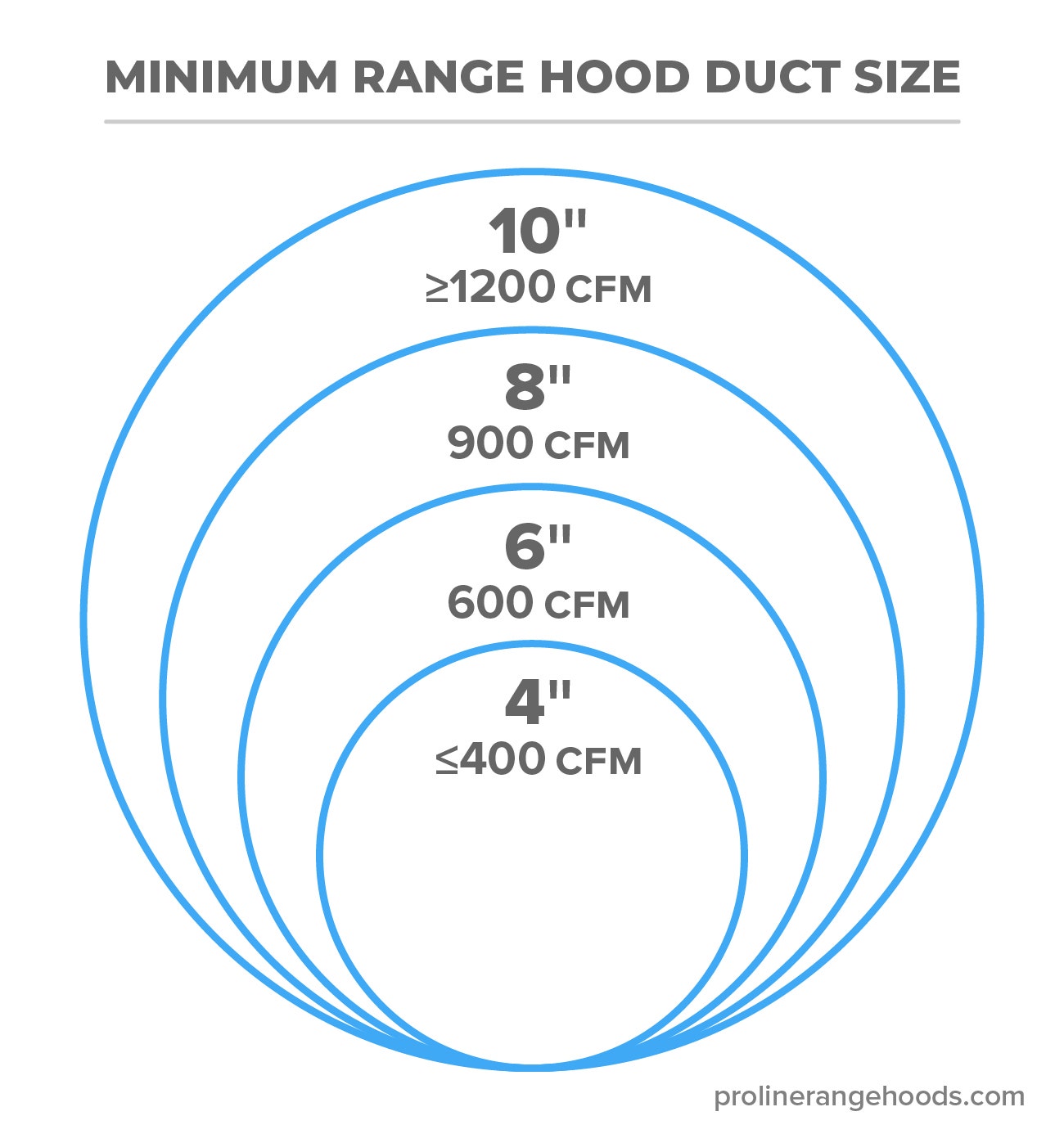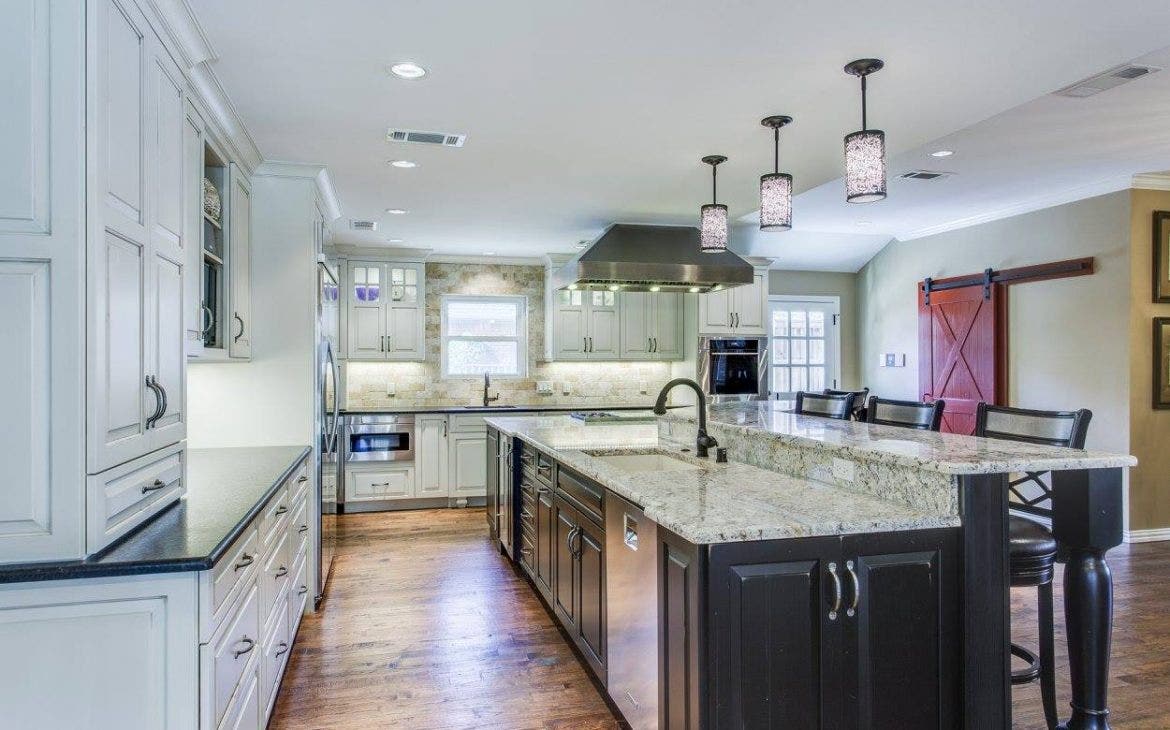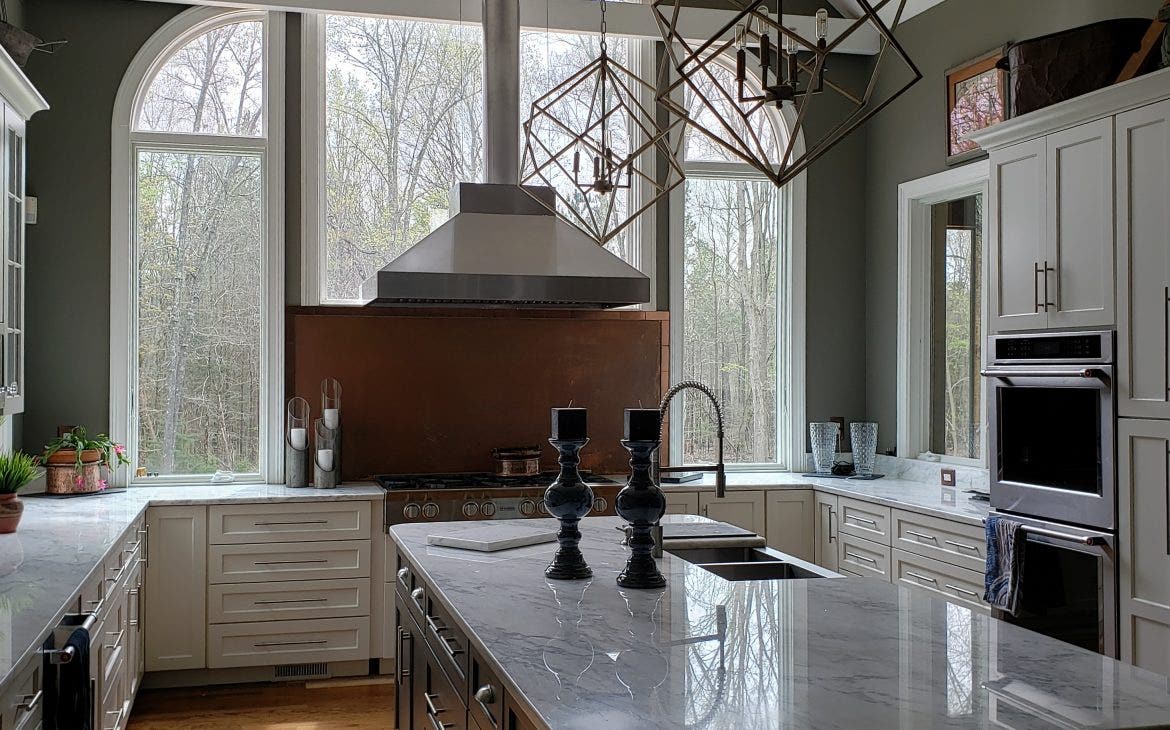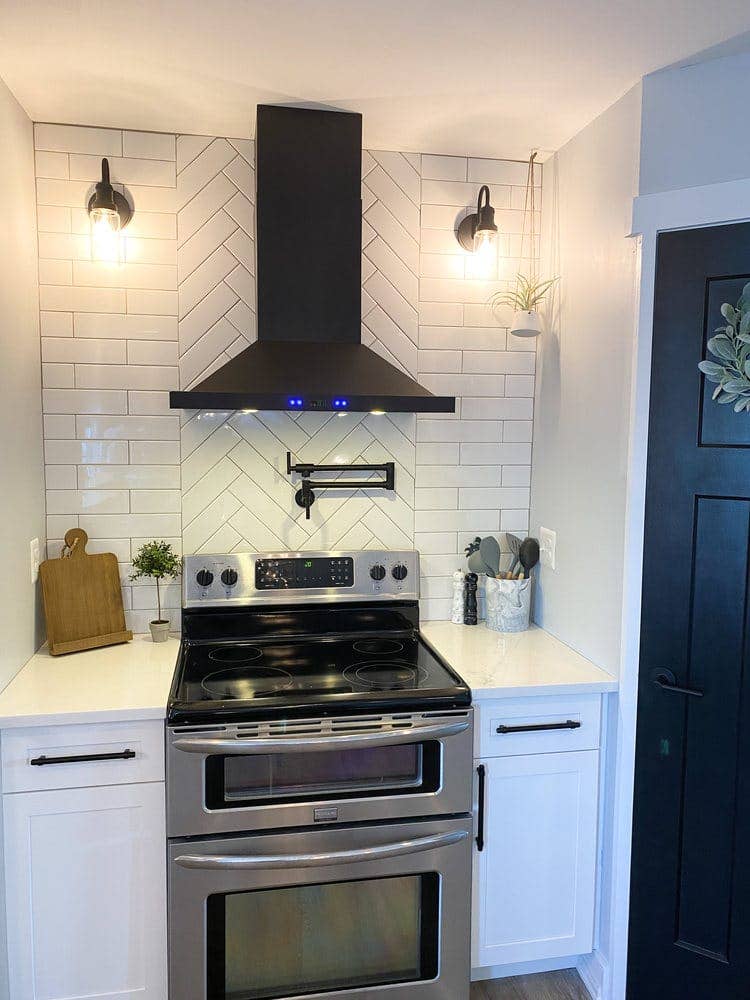What Size Hole for Easy Pour Vent Cap


When shopping for a range hood, you may have considered its width, cubic feet per minute (CFM), and the style. These are, after all, three of the most important features to consider when shopping for a range hood.
However, one aspect of kitchen exhaust fans that is often overlooked is the range hood's duct size and configuration.
This is just as important, if not more important, than range hood CFM. Regardless of the CFM of your range hood, if you have ductwork that is too small, it will not run at maximum efficiency.
So, it is in your best interest to identify the right duct size before you make your purchase. This will help you avoid hurdles and unexpected costs down the line. Also, the right range hood duct size will ensure that your hood is efficient and quiet for years to come.
How do you measure a duct for a range hood?

- 0-400 CFM: minimum duct size of 4", recommended duct size of 6"
- 401-600 CFM: minimum duct size of 6", recommended duct size of 8"
- 601-900 CFM: minimum duct size of 7", recommended duct size of 8"-10"
- 901-1200 CFM: minimum duct size of 8", recommended duct size of 10"-12"
- 1200+ CFM: minimum 10" diameter duct, recommended duct size of 12"
Range Hood Duct Length

Next to ductwork size, the length of your ductwork is important to consider.
In some cases, even if your ductwork is a little undersized, you can still exhaust the cooking air efficiently if you have a very short run or length of ducting.
First, a shorter duct run is always better. This means that your air needs less velocity to make it to the outside.
Next, the less elbows, the better. Every time you change the direction of your ductwork, you add resistance and additional pressure to the air exiting your home. Reducing the length of your ductwork can accommodate for the added resistance.
First, we don't recommend running your ductwork any longer than 30 feet.
From there, our standard reduction in length for each elbow or 90 degree elbow in your ductwork is 10'. So if you need one elbow, then your max ductwork run should be no more than 20 feet.
So, if you have to choose between a 20' run with two elbows out the sidewall or a 40' run straight up with no elbows, these will be about equivalent in static pressure at the exhaust point.
And finally, since hot air rises, upward ducting is always the best way to go in the kitchen. It will help move the air out of your home faster.
Proline Customer Examples Involving Duct Size

Customer #1 – Bob
Bob lives in an older apartment in Boston. He has an existing 6" duct that goes up the wall, turns a corner, crosses the ceiling for about 15', then exits the side of the building. He wants to know if he can hook up a 600 CFM range hood to his existing ducting. His range is 30″. Bob could invest in a recirculating hood, but he's not sure if that's the right choice.
Our Suggestions for Bob
Our suggestion for Bob is to connect our 36″ PLFW 520 range hood to the existing 6" ductwork. Even though Bob has existing ductwork, he should check with his landlord to see if he can duct to the outside. He likely won't have any problems, but it's best to double check before proceeding with the installation.
In most apartments, especially if you are on a second floor or higher, there's not enough room to duct to the outside.
We recommend that he runs the range hood at its lower speeds to prolong the life of the hood.
Customer #2 – Lucy
Our second customer, Lucy, lives in Phoenix, AZ. She is building a new home. Lucy is venting over a 48" Wolf range and cooks several times a day. In fact, she enjoys cooking at home with all of her family, so she often has the cooktop on for hours. Additionally, she loves to grill.
Lucy wants to make sure her range hood ductwork is sized correctly for her new home and wants the range hood blower motor installed externally, on the rooftop of her house. The BTUs for her cooktop are a maximum of 78,000.
Our Suggestions for Lucy
We recommend 12" ductwork for Lucy, especially if she uses her indoor grill often. But, depending on her budget and personal preference, she can install a minimum of 10" ductwork.
We also recommend a 1000-1200 CFM rooftop blower. Over a 48" inch kitchen range, a 54" or 60" range hood is ideal to ensure full coverage over her cooktop.
Proline's ProV models come with an external blower option. We recommend that Lucy browse our versatile and customizable ProV wall and ProV island range hood models.
Hopefully this helps provide some answers and insight about choosing and planning out the size of your ductwork and how you will run it.
What is the minimum duct size for a range hood?

The minimum duct size for a range hood is 4", which is ideal for range hoods 400 CFM and under. The higher the cubic feet per minute, the larger the duct you'll need. At 600 CFM, the minimum duct size is 6". At 900 CFM, the minimum duct size is 8". Finally, at 1200 CFM and above, consider a 10" diameter duct or larger.
Is it OK to vent my range hood into the attic?
Never vent your range hood into the attic. The buildup of chemicals, grease, and smoke in the attic can be harmful to your health over time. Ideally, vent it out an exterior wall.
How do you reduce duct size?
It is not recommended to reduce duct size. This may decrease the efficiency of your kitchen range hood by restricting the flow of air as it travels through your ductwork.
In rare cases, only if the ductwork is several inches larger than necessary, will your ductwork need to be reduced. Ductwork that is too large will drastically reduce the velocity of air as it moves to the outside of your home. It may not reach the outside.
But, this is highly uncommon. It's more common that small ductwork restricts the flow of air. For that reason, it is highly recommended to purchase larger ductwork rather than smaller ductwork.
One common concern we hear from customers at Proline is that their kitchen hood is not running efficiently. This is often because their ductwork is too small given the CFM of their range hood. If it's only an inch smaller than recommended (see the list above), this is not a huge deal. But if it's two inches smaller or more, we either recommend that they replace their ductwork or convert the vent hood to recirculating. But, you should always vent outside over recirculating your kitchen air, even if you must adapt to an existing smaller duct size than is recommended.
If you have any questions, please call Proline Range Hoods at 877.901.5530.
If you need to replace your range hood duct, contact a local HVAC or ductwork specialist.
Is a round or square duct better?
The general consensus is that a round duct is more efficient and cost-effective than a rectangular duct. Air systems with round ducts have less air resistance because they use significantly less metal than rectangular duct systems. This also means that round duct is the cheaper option.
Can you use PVC duct for a cooker hood?
We don't recommend using PVC duct for your range hood. It's not nearly as durable as aluminum or stainless steel ductwork. You should also avoid flex duct for your range hood; it won't last very long!
Read more about what type of duct is best for your hood in this article.
Can I use a periscope duct for my vent hood?
We don't recommend using a periscope duct for your vent hood. Instead round or rectangular duct is best since there's much more room for the air to move.
How to Clean Range Hood Duct
If you've already purchased your hood, you are probably here because your kitchen range hood is not running efficiently. This could be due to a greasy range hood duct. Unfortunately, cleaning this duct can be quite expensive and requires professional assistance. For a complete guide on duct cleaning for your kitchen fan, click here.
To avoid the hassle of duct cleaning altogether, remember to clean your filters every three to four weeks depending on your cooking habits.
Can you expand an existing kitchen hood system?
That depends on your kitchen setup. If you currently have ductwork in your home, the most affordable option is to use the existing duct. Expanding your duct system will cost more money for installation. Also you might not have the room to expand it, if electrical wires or studs are in the way.
Consult a licensed contractor to ensure you make the right decision on your range hood duct system. If you have questions, we'd be happy to talk with you about what expanding your existing kitchen hood system might look like. Give us a call at 877.901.5530.
Can you convert a 7 in. round ducted range hood to vent to a vertical outside vent?
Some range hoods have rotatable blowers, which allow you to vent horizontally through a wall or vertically through a wall or the ceiling. With a rotatable blower, you can convert the hood from horizontal to vertical venting. But, if the ductwork is already installed, this is not recommended. It can be quite expensive to rearrange the ductwork.
Recap
Hopefully you found this guide on range hood duct size helpful. Range hoods are a beautiful and functional addition to your kitchen that can last for years with the proper maintenance.
Check out more of our comprehensive content on range hoods below.
Related Articles
Best Range Hood for Asian Cooking
4 Ducted Range Hood Venting Options
5 Best Wall Range Hoods from Proline
How do you measure a duct for a range hood?
0-400 CFM: minimum duct size of 4", recommended duct size of 6"
401-600 CFM: minimum duct size of 6", recommended duct size of 8"
601-900 CFM: minimum duct size of 7", recommended duct size of 8"-10"
901-1200 CFM: minimum duct size of 8", recommended duct size of 10"-12"
1200+ CFM: minimum 10" diameter duct, recommended duct size of 12"
What is the minimum duct size for a range hood?
The minimum duct size for a range hood is 4", which is ideal for range hoods 400 CFM and under. The higher the cubic feet per minute, the larger the duct you'll need. At 600 CFM, the minimum duct size is 6". At 900 CFM, the minimum duct size is 8". Finally, at 1200 CFM and above, consider a 10" diameter duct or larger.
Is it OK to vent my range hood into the attic?
Never vent your range hood into the attic. The buildup of chemicals, grease, and smoke in the attic can be harmful to your health over time. Ideally, vent it out an exterior wall.
How do you reduce duct size?
It is not recommended to reduce duct size. This may decrease the efficiency of your kitchen range hood by restricting the flow of air as it travels through your ductwork.
In rare cases, only if the ductwork is several inches larger than necessary, will your ductwork need to be reduced. Ductwork that is too large will drastically reduce the velocity of air as it moves to the outside of your home. It may not reach the outside.
But, this is highly uncommon. It's more common that small ductwork restricts the flow of air. For that reason, it is highly recommended to purchase larger ductwork rather than smaller ductwork.
Is a round or square duct better?
The general consensus is that a round duct is more efficient and cost-effective than a rectangular duct. Air systems with round ducts have less air resistance because they use significantly less metal than rectangular duct systems. This also means that round duct is the cheaper option.
Can you expand an existing kitchen hood system?
That depends on your kitchen setup. If you currently have ductwork in your home, the most affordable option is to use the existing duct. Expanding your duct system will cost more money for installation. Also you might not have the room to expand it, if electrical wires or studs are in the way.
Consult a licensed contractor to ensure you make the right decision on your range hood duct system. If you have questions, we'd be happy to talk with you about what expanding your existing kitchen hood system might look like. Give us a call at 877.901.5530.
Can I use a periscope duct for my range hood?
We don't recommend using a periscope duct for your vent hood. Instead round or rectangular duct is best since there's much more room for the air to move.
Can you use PVC duct for a cooker hood?
We don't recommend using PVC duct for your range hood. It's not nearly as durable as aluminum or stainless steel ductwork. You should also avoid flex duct for your range hood; it won't last very long!
Read more about what type of duct is best for your hood in this article.

Source: https://www.prolinerangehoods.com/blog/range-hood-duct-sizing-guide/

0 Response to "What Size Hole for Easy Pour Vent Cap"
Post a Comment